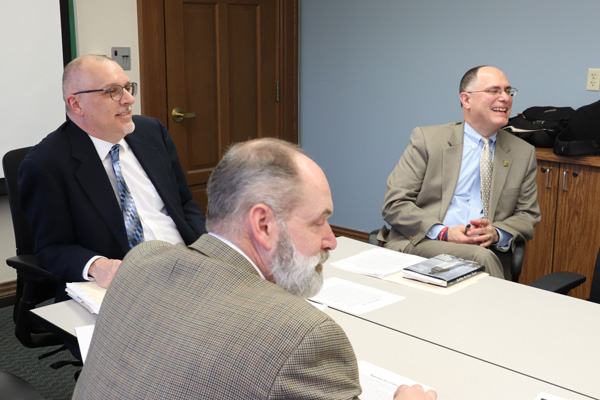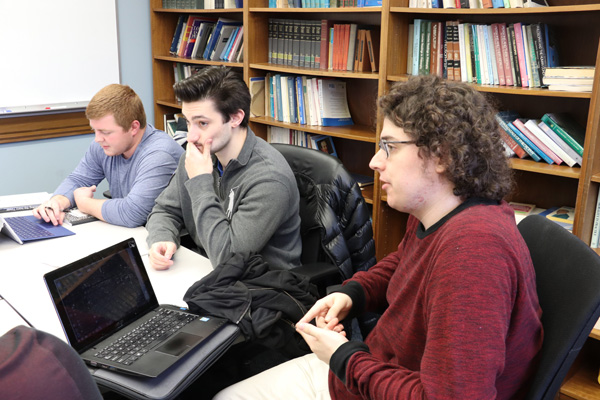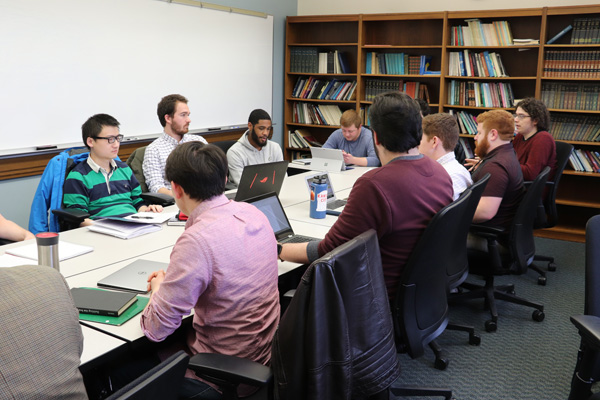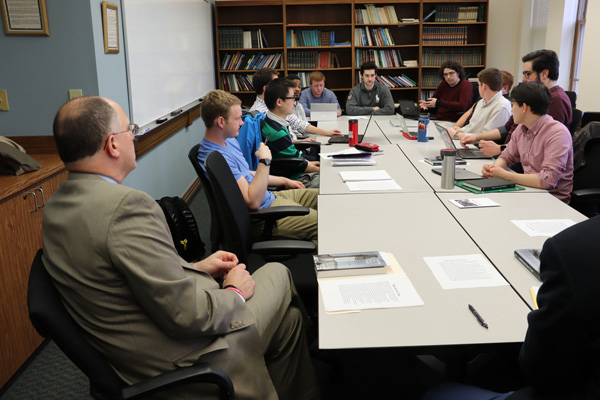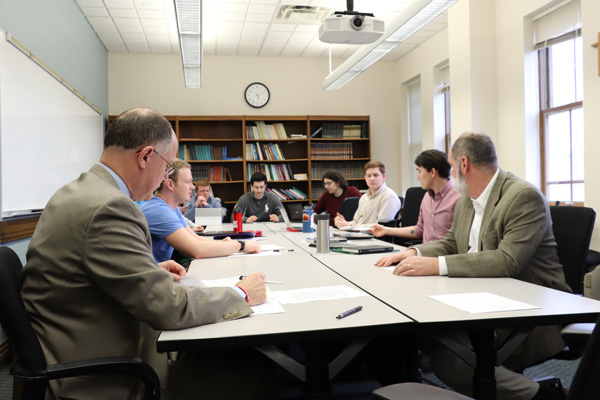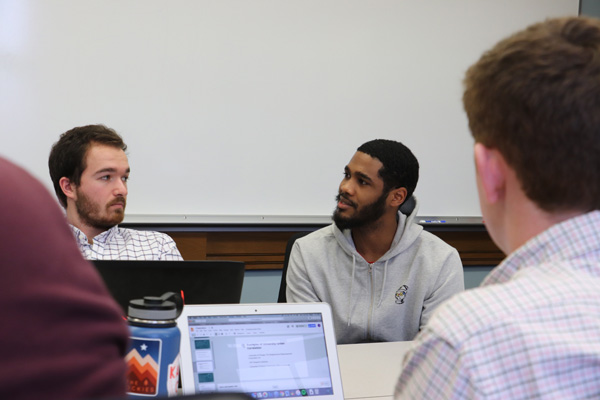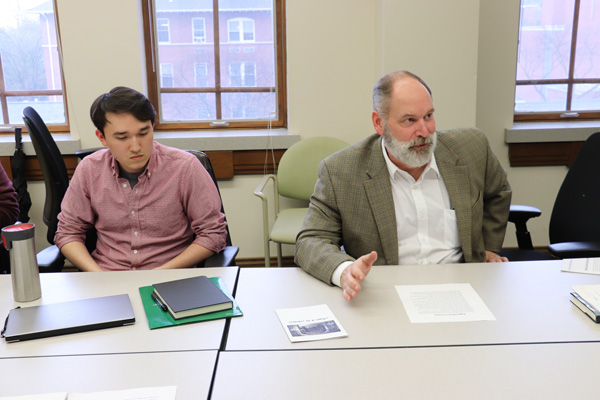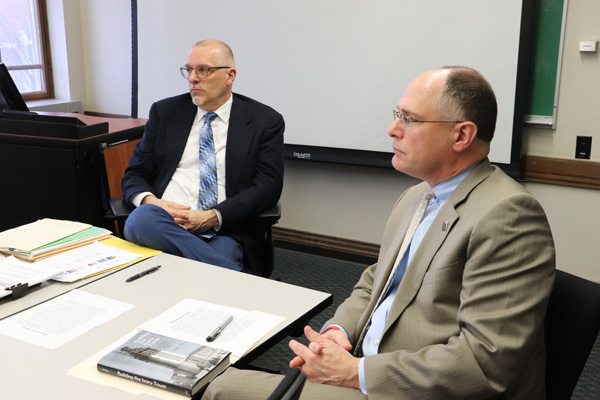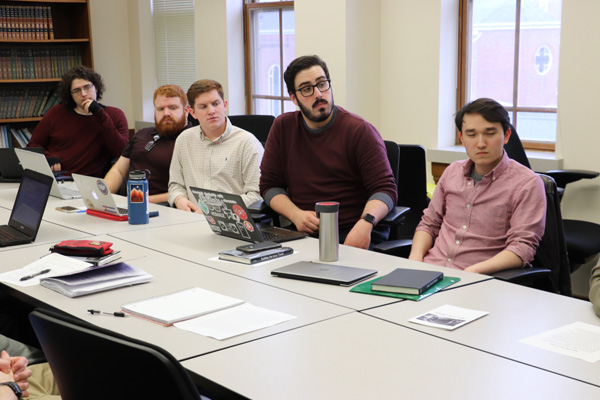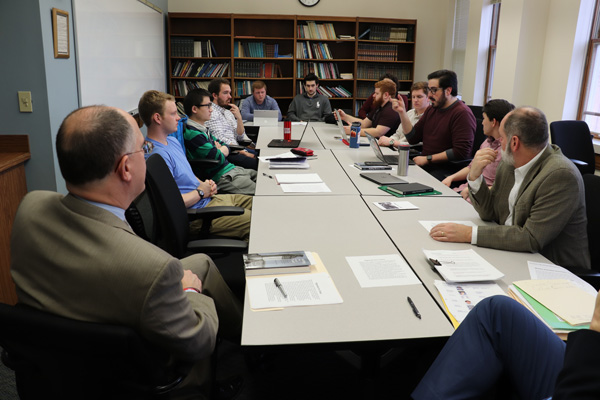College of Arts and Sciences Newsroom
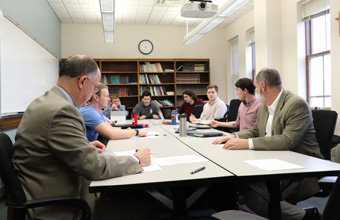
Students Trace UD Arena's History
The University of Dayton Department of History wanted to do something different this year for its senior capstone class. The students are researching the history of UD Arena and its relationship to the Dayton community as a class project. The project is tied to the arena's 50th anniversary and its current renovation.
"The students seem excited and that excites us," said Todd Uhlman, assistant professor of history who is known to his students as "Dr. U."
David Darrow, associate professor of history, and Uhlman came up with the idea to do a study of the arena for the 50th anniversary. They decided to make the class a collective research project, for all 12 students in the class.
"We didn't want it to just be about the specific construction of the arena but rather a social and cultural history," Uhlman said. "What has the arena done for Dayton? What has the University of Dayton done for the larger community?"
The professors started teaching the students how to use the University archive. The students were then responsible for going to the archive and conducting their research, looking for not only the history of the construction of the arena, but also its social and cultural history.
"When you're in the archive you don’t know what you're going to find," said Alex Bourdakos, a senior from Chagrin Falls, Ohio. "It's not only just what you find and how you interpret it. You have to craft the story yourself and infer from what your seeing how the history happened. The document can only tell you so much; you have to put the pieces together."
According to Darrow, the arena has a history on multiple levels — sporting venue, architectural item and as a bridge between the University and Dayton community.
University President Eric F. Spina sat in on the class on March 28 to learn more about the project and the class’ initiative.
"What a great idea for a course and to see the students come alive, they know more about this institution than most, maybe all of the faculty and staff," Spina said. "This is a history class but it's really important for today. So, I'm really impressed by the students and their engagement and obviously the way the faculty has developed this class."
So far the students have spent about 360 to 380 hours in the archive this semester. Their goal is to cover at least the first decade of the arena.
"Even as a senior I find it a little overwhelming because I've never had a class like this before," Bourdakos said. "It's cool to actually do the work of a historian instead of just writing papers."
In addition to conducting research in the archive, students must work as a group and share their research and ideas to write one collaborative narrative.
"In doing this, they're being real historians," Darrow said. "They're having the experience where they're going through an entire box of papers and finding absolutely nothing and then the next box it seems to take them forever to get through because every piece of paper they touch has something interesting and important."
While conducting research in the archives the students discovered how the arena was funded, how the land was determined and the design specifications. The students also discovered there were many social issues happening during the building of the arena. Although the arena was not intended to directly impact any social issues, it did have an impact on the community.
"We have information on the arena as an economic force, as a racial force and as a force for social change. Now we have to make it all one cohesive narrative," said Adam Schwartz, a senior from Hamilton, Ohio. "We can connect what's going on with UD at the time with how the arena is being used as a social change and kind of a relief of racial tension."
In addition to the group's paper, the class will produce a website called daytonarenahistory.org with the paper, primary documents found in the research, photos, oral interviews and a forum where locals can write their stories of the arena.
"The students are doing historical research in ways we’ve done it going back hundreds of years but when telling the story they are combining that with this new technology of the internet," Uhlman said.
Darrow and Uhlman said this project would not be possible without the help of Scott DeBolt, director of UD Arena; Paul Dagnell of the Learning Teaching Center; English professor Patrick Thomas; and University archivists Jennifer Brancato and Kristina Schulz.
"It's definitely a much more intense feeling, but I think one that will benefit the history department in the long run," Schwartz said.
Next spring, Uhlman will teach the same course with new students, who will add to the project. Darrow will teach Introduction to the Historian's Craft, where the students will learn the basic skills of the archives before they get to the senior capstone class.
- Clare Gallagher ‘18

